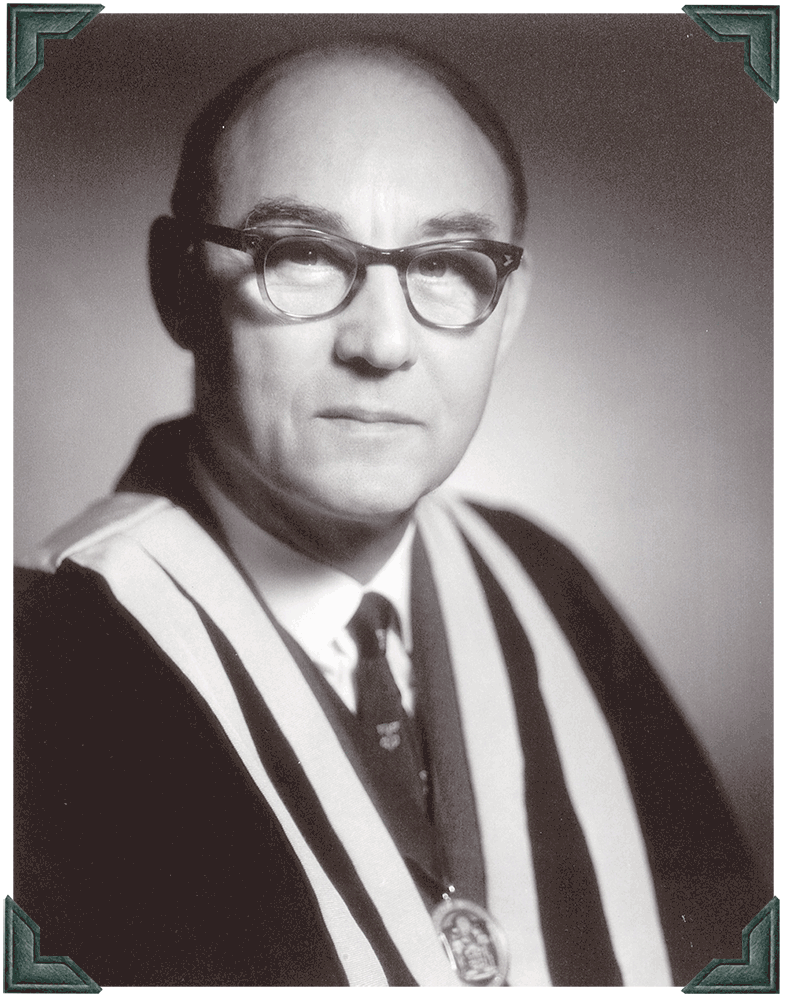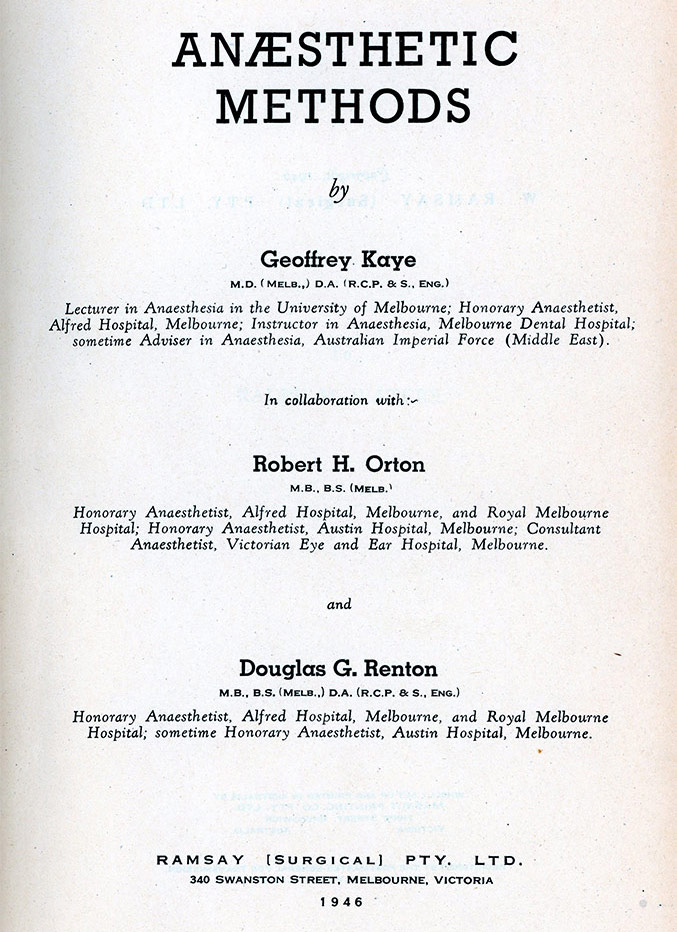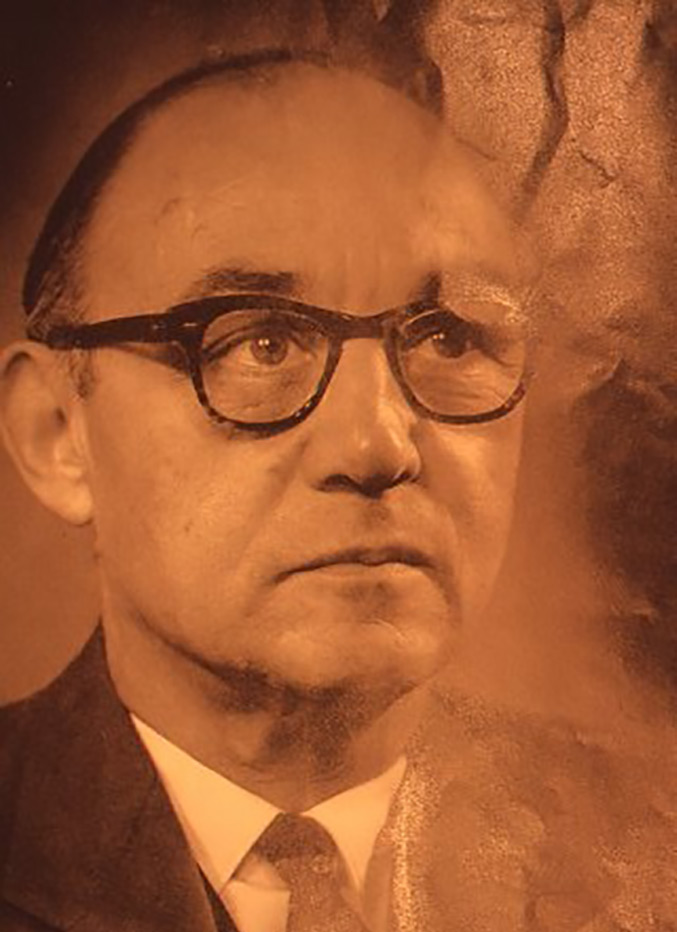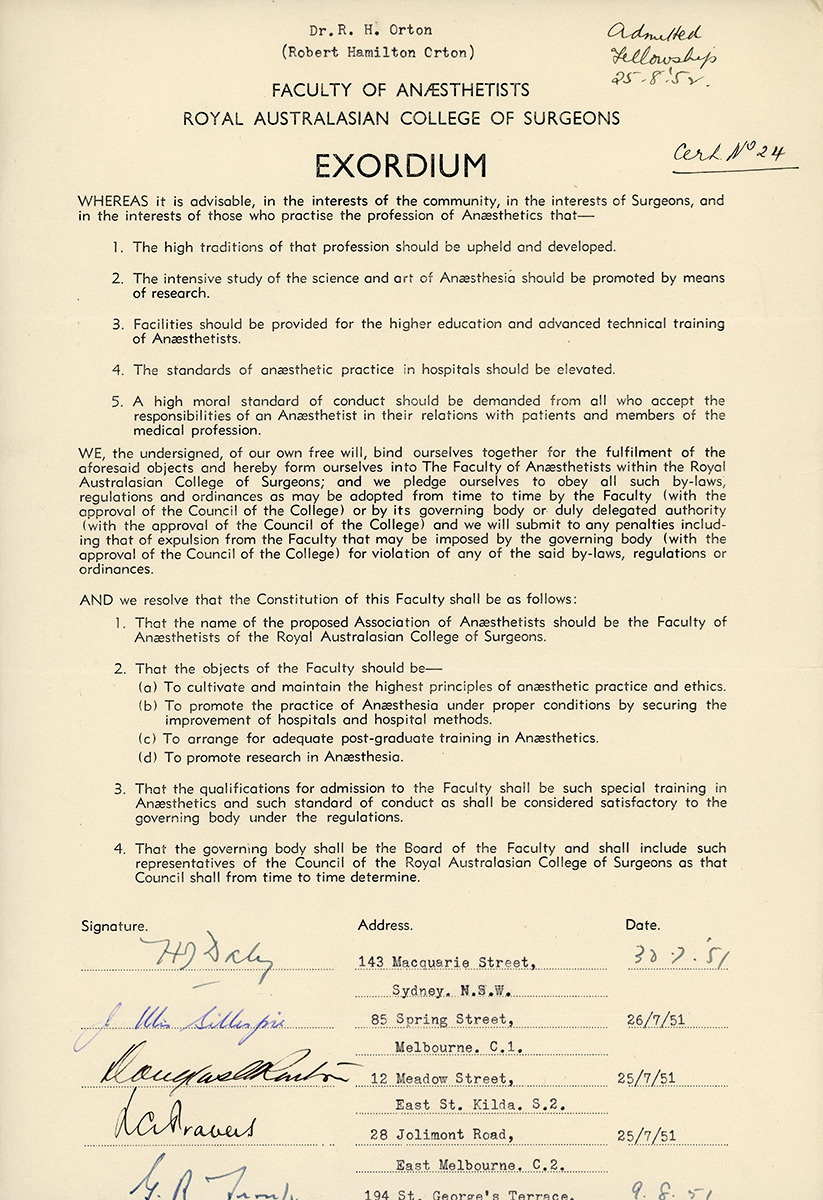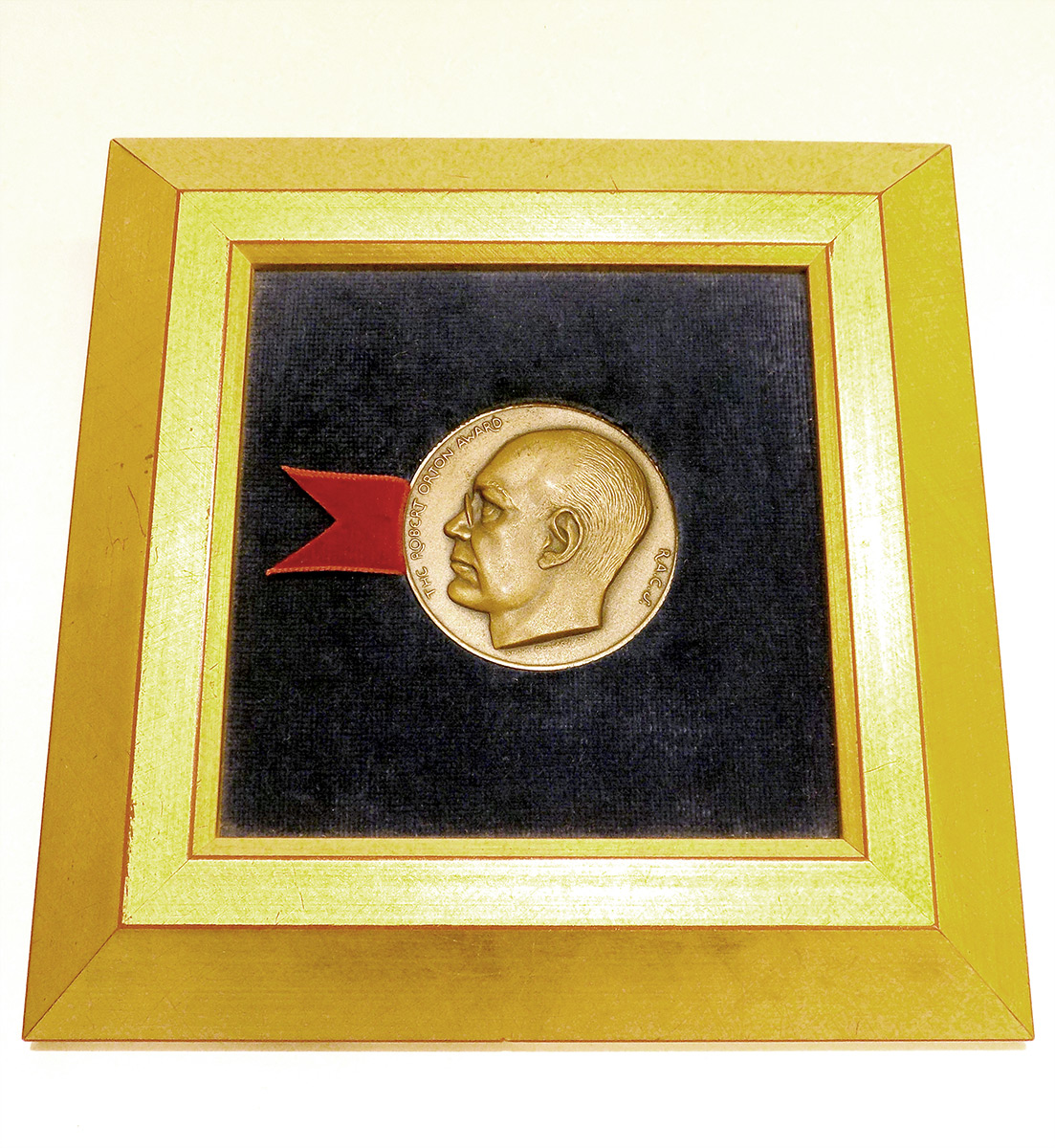Name: Robert Hamilton Orton
Qualifications:
MBBS – University of Melbourne (1930)
DA – University of Melbourne (1948)
Date of Birth: 5 April 1906
Date of Death: 21 December 1966
Robert Hamilton Orton was born in Melbourne on April 5, 1906. After completing his studies at the University of Melbourne in Medicine, he began his long-standing career at the Alfred Hospital. After entering private practice in 1934, Orton became very ill and decided to re-enter the hospital in order to learn about anaesthetics. Working as the Alfred’s honorary anaesthetist, Orton became very interested in Thoracic Surgery. His contributions to the field were awarded with a Diploma of Anaesthetics in 1948 and the development of the Thoracic Surgical Unit. Outside of professional appointments, Orton has been awarded Fellowships in both England and Australia with the Faculty of Anaesthetists. He has also served the Faculty and Australian Society of Anaesthetists in leadership positions.
Can you add any details to this biography?
If so, complete the Contributor Form.
Robert Hamilton Orton was born on April 5, 1906 in Hawthorn Victoria.[i] Orton attended Wesley College for his primary and secondary education.[ii] The location of the college, opposite the Alfred Hospital, is significant. Orton would work and die in this hospital later in life. After graduating high school, Orton commenced study at the University of Melbourne completing his Bachelor of Medicine, Bachelor of Surgery in 1930.[iii]
From 1930 until 1934, Orton was a Resident Medical Officer, Registrar and Assistant Pathologist at the Alfred Hospital.[iv] After his first graduate experience, he entered into private practice until 1938.[v] During this early career, Orton was diagnosed with diabetes and contracted tuberculosis. Both illnesses impacted greatly on Orton’s life but did not prevent him from further career appointments. He did, however, decide to follow a career in anaesthesia.
In 1938, Orton became the honorary anaesthetist at the Alfred, Royal Women’s, Royal Melbourne and Austin Hospitals.[vi] He also continued practicing pathology at the Victorian Eye and Ear Hospital.[vii] By 1940, Orton had become particularly interested in thoracic surgery. He served as full-time anaesthetist to the Thoracic Surgical Unit in the Alfred Hospital.[viii] Orton contributed significantly to developing thoracic surgery as its own specialty. With the introduction of the Diploma of Anaesthetics, Orton inquired as to whether a thesis on thoracic surgery would be appropriate. Due to the excellence of the submission, the University of Melbourne awarded Orton a Diploma in Anaesthetics in 1948.[ix]
Orton also published significant texts during this period including the 1946 Anaesthetic Methods, the second official anaesthetic textbook in Australia.[x]
His final posting was as Director of Anaesthesia and Resuscitation at the Alfred Hospital in 1950.[xi] He continued his work in this position until his death in December, 1966.
In recognition of his hard work and advances to the specialty of thoracic surgery, Orton was awarded many distinguished honours. In 1952, he was admitted as Fellow to the Faculty of Anaesthetists in both the Royal Australasian College of Surgeons and the Royal College of Surgeons in England.[xii] Ten years later in 1962, the Royal College of Surgeons in England awarded him with an Honorary Fellowship.[xiii]
Orton was significantly involved in both the Australian Society of Anaesthetists (ASA) and the Faculty of Anaesthetists in the College. From 1947 until 1949, he served as the ASA President.[xiv] From 1953 to 1966, he was a member of the Faculty, becoming the second Dean in 1955.[xv] He held this position until 1959.
In memoriam, the Australian and New Zealand College of Anaesthetists now award the Robert Orton Medal for distinguished service to anaesthesia. The first was awarded to Margreat McClelland in 1968.[xvi] Other well-known recipients include Geoffrey Kaye and Tess Cramond.
REFERENCES
[i] ‘Birth Certificate’, Robert Orton, 1906, Hawthorn: Victoria, ANZCA Archives, Series 11. [ii] Terry Loughnan, ‘Series on Past Deans and Presidents’, ANZCA Bulletin, 13, no. 2 (June 2004): 9, ANZCA Archives, Series 11. [iii] Robert Hamilton Orton, ‘Exordium’, Application Form, 1952, Geoffrey Kaye Museum of Anaesthetic History: VKGM 6903.19. [iv] ‘Obituary: Robert Hamilton Orton’, The Medical Journal of Australia, May 6, 1967, p. 935, ANZCA Archives, Series 11. [v] Ibid.[vi] Terry Loughnan, ‘Series on Past Deans and Presidents’.[vii] Ibid.[viii] Ibid.[ix] Robert Hamilton Orton, ‘Exordium’.[x] Alfred Kaye, Robert H. Orton, and Douglas G. Renton, Anaesthetic Methods (Ramsay: Melbourne, 1946).[xi] Loughnan, ‘Series on Past Deans and Presidents’.[xii] Robert Hamilton Orton, ‘Exordium’.[xiii] Australian Society of Anaesthetists, ‘ASA Presidents’, 2015, Online: https://www.asa.org.au/ASA/About_us/History_of_the_Society/Past_Presidents/Past_Presidents.aspx.[xiv] R.S. Johnson-Gilbert, ‘Faculty of Anaesthetists Royal College of Surgeons of England’, Letter, 26th September, 1962, ANZCA Archives, Series 11.[xv] Loughnan, ‘Series on Past Deans and Presidents’.[xvi] Australian and New Zealand College of Anaesthetists, ‘Robert Orton Medal’, 2015, Online: http://www.anzca.edu.au/about-anzca/our-awards/robert-orton-medal.html.IMAGES
- ‘Robert Orton’, ANZCA Archives, Series 148, Item 22.
- ‘Cover page of Anaesthetic Methods – copy held in ANZCA library.
- ‘Robert Orton’, Geoffrey Kaye Museum of Anaesthetic History: VKGM 6929.
- Robert Hamilton Orton, ‘Exordium’, Application Form, 1952, Geoffrey Kaye Museum of Anaesthetic History: VKGM 6903.19.
- ‘Robert Orton Award’, Geoffrey Kaye Museum of Anaesthetic History: VKGM 6692.

